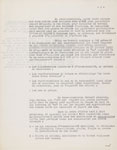After the post-war years of want, France, restructured around a State that was back in working order, recovered relative prosperity.
The number of births increased and youth became a stake in the future.
The young had to be protected from delinquency and the pernicious influence of illustrated magazines from America and elsewhere…
Every week, 3 million children bought these periodicals: the idea of introducing regulation made headway.
Religious and moral leagues, educators and communists were worried about the influence of these illustrated magazines on children.
The debates inspired by this law were nourished by the protectionism of French artists, anti-Americanism and the denunciation of what was believed to be the intellectual poverty of the magazines, as well as moralism and the fear of an indoctrination of youth, threatened by ‘moral ruin’.
The Supervisory Committee which controlled these publications for the young was set up to keep watch on their production.





